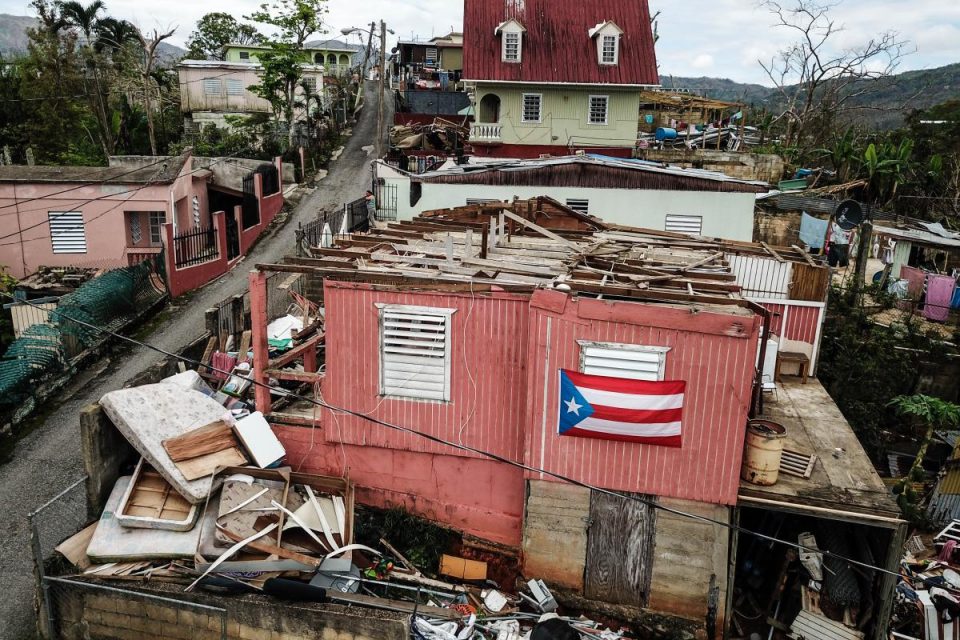
Publicado el 1 de junio de 2018 | 80 Grados Prensa sin Prisa
Por Rafael Guerrero Preston
As the 2018 Caribbean hurricane season approaches, what did we learn from last year’s powerful storms and their aftermath? One valuable experience was hardly reported in the US press, despite extensive coverage on Hurricane Maria. On the heels of this devastating storm, physicians, medical and public health personnel in the continental US, in tandem with their counterparts in Puerto Rico, organized an unprecedented medical airlift through social media and text messaging. Puerto Rico’s grassroots medical relief operation after Maria is the largest such effort on record and may be a model for others in the future.
In the days and weeks after Maria, over 5,000 physicians, basic science researchers, and other public health professionals, many university-based, used their professional networks to shape an extensive, physician-to-physician network. Groups across the U.S. coalesced and established pipelines to deliver medicines and medical supplies, with minimal assistance (at best) from the island and federal authorities. Using Facebook, WhatsApp, and text messaging, this self-organized network delivered over 60 tons of medicines, medical supplies, and equipment to Puerto Rico during the first three weeks after María, relying mostly on private planes and airline donations. On the receiving end were hospitals, clinics, cancer centers, shelters, senior citizens, and group homes for children in 70 of the 78 municipalities of Puerto Rico, including the offshore islands of Vieques and Culebra, who received the medical supplies directly from the San Juan and Aguadilla airports.
The first shipment of medical supplies arrived in Puerto Rico just six days after the hurricane, despite the virtual collapse of communications in the island: 15,000 pounds of antibiotics, sutures, gauze, surgical kits, syringes, medications, and other medical supplies, shipped on United Airlines free of charge. Dr. Marietta Vazquez, a professor Yale School of Medicine, led this effort with a newly-formed group, Puerto Rico Rising-Connecticut. Three other groups –Doctoras Boricuas, Grass Roots Medical Relief, and Puerto Rico Rising Maryland– also began to airlift medical relief to Puerto Rico’s Pediatric Hospital, the island’s Academy of Family Physicians, and the School of Pharmacy at the University of Puerto Rico. Soon Texas joined in, with TexasUnited4Puerto Rico and Physicians Medical Relief from Houston.
Word of mouth spread like wildfire. A network arose spontaneously, with four nodes: New Haven, Baltimore, Houston, and Miami. In city after city, physicians and public health personnel joined to send medical and emergency relief supplies, organized public forums, and set up a research network to begin the recovery efforts of the primary health care and hospital systems in Puerto Rico.
Many requests for medicines and medical supplies from Puerto Rico began with handwritten notes on physicians’ prescription pads, sent via text messages or WhatsApp through faltering cellphone signals. By the end of the second week, the network was established, working with the Academy of Family Physicians and the Pediatric Hospital as the primary contacts in Puerto Rico.
Volunteers in the US worked around the clock, requesting supply lists from physicians on the ground, looking for donated airplanes, and preparing shipping manifests and plastic covered pallets. Leased cargo planes flew shipments targeted to specific hospitals and clinics, clustered by geographic area. Physicians stood guard at the departing airports and even travelled with the medical supplies to ensure proper handling during transport. In Puerto Rico, physicians and/or pharmacists were present upon arrival and during delivery to designated health facilities.
On average, it took fifteen days from the moment requests were made to delivery and receipt on-the-ground. This process included prioritizing, fundraising, medicine purchasing, packaging, flying out donations, and physician-enabled receipt. Networks that included other emergency supplies such as food, water, batteries, and power generators were also in full swing by early October, when 100 tons of articles were being flown in weekly to Puerto Rico.
The emergency medical network was not only the first responder for medical relief in Puerto Rico, but also its sole provider for almost three weeks after the storm. The network’s role was particularly important, as there were practically no federal officials in Puerto Rico during the first week after Maria, and the territory’s government was in disarray due to massive power and telecommunications failures.
Two months after the hurricane, the network included groups from over twenty states, and a large number of universities and non-profit organizations: the University of California in San Diego, the University of Rochester, the University of Georgia School of Public Health, and the Cajun Airlift, among others. In Puerto Rico, the network encompassed Médicos por PR, Iniciativa Comunitaria, the Puerto Rico Science and Technology Trust, the UPR Medical Sciences Campus, and the Ricky Martin Foundation.
The post-Maria medical relief effort to Puerto Rico was the first large-scale, social-media based effort for disaster relief, using physician-to-physician networks. The speed with which physicians were able to communicate through social media, secure medical supplies, and arrange transport played a key role in this process. Hopefully their response will not have to be repeated for many years. But if it is, thousands of doctors and medical personnel, and their counterparts in Puerto Rico, will have the exhausting, exhilarating weeks after Maria as an indelible baseline. Hopefully, too, the federal and island governments will have learned how to support, and interact with, Puerto Rico’s new first responders.


